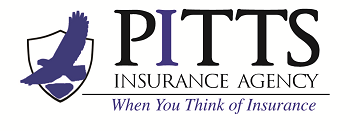
FIREPLACE AND CHIMNEY SAFETY
Colder weather is just around the corner, and the fireplace is a warm and comfortable place to spend time with friends and family. But it can also be a fire hazard. Here are some safety tips from the Chimney Safety Institute of America to help get your chimney and fireplace ready for the season.
WHAT CAUSES CHIMNEY FIRES?
Safe chimneys are clean chimneys. And chimney fires are most often a result of creosote, a highly combustible residue that can build up on the chimney’s interior walls and restrict airflow. This is a problem, because the chimney’s job is to carry the toxic by-products of wood-burning — smoke, wood particles, dangerous gases like carbon monoxide (CO) — outside.
According to the Chimney Safety Institute of America (CSIA), common causes of creosote buildup include burning unseasoned wood, restricted airflow in the chimney, and cooler than normal chimney temperatures. Creosote can appear black or brown, crusty, tar-like, drippy and sticky, or shiny and hardened. And keeping your chimney unobstructed is not just important for fire safety, but for preventing CO poisoning. Without good airflow, CO can build up in your home and cause illness or death.
SIGNS OF A CHIMNEY FIRE
Though chimney fires sometimes burn explosively and noisily, they are not always obvious and a majority of them go undetected.
The CSIA says signs that a chimney fire is actually in progress may include:
- An intense, hot smell
- Dense smoke
- Low rumbling sound or loud cracking and popping noise
- Flames or dense smoke shooting from the top of the chimney
If you notice any of these, happening, leave the house and call 911.
Signs that a chimney fire may have already happened include:
- Cracked and discolored masonry or flue tiles
- Warped or discolored chimney cap
- Creosote flakes or ash in the chimney or on the roof
- Roof damage
If you think a chimney fire has occurred, or you notice a creosote buildup, contact a professional chimney sweep right away for an inspection and cleaning.
CHIMNEY MAINTENANCE AND SAFETY
The Federal Emergency Management Agency (FEMA) provides the following recommendations to keep your chimney safe.
- Have a professional chimney sweep inspect and clean your chimney once a year. Even if you don’t use your fireplace, debris may have accumulated or critters may have taken up residence in your chimney.
- Check annually that the chimney cap is intact, secure, and unobstructed.
- Only burn dry, seasoned, healthy wood.
- Don’t overload the firebox in an attempt to get a longer burn time.
- Make sure the damper is fully opened when using the fireplace.
- Keep a fire extinguisher nearby.
When in doubt, always refer to a professional chimney sweep’s opinion about what’s right for your home.
Blog Credit to our Partners: Grinnell Mutual Reinsurance Company
